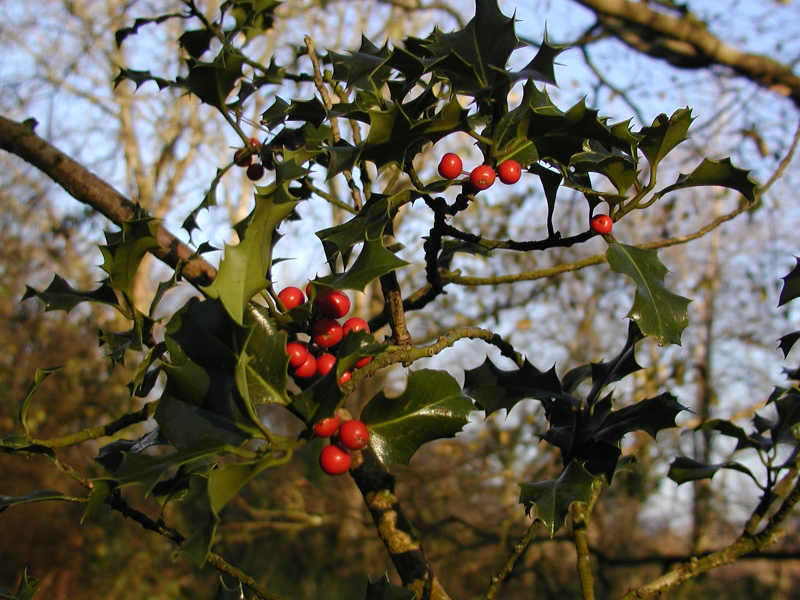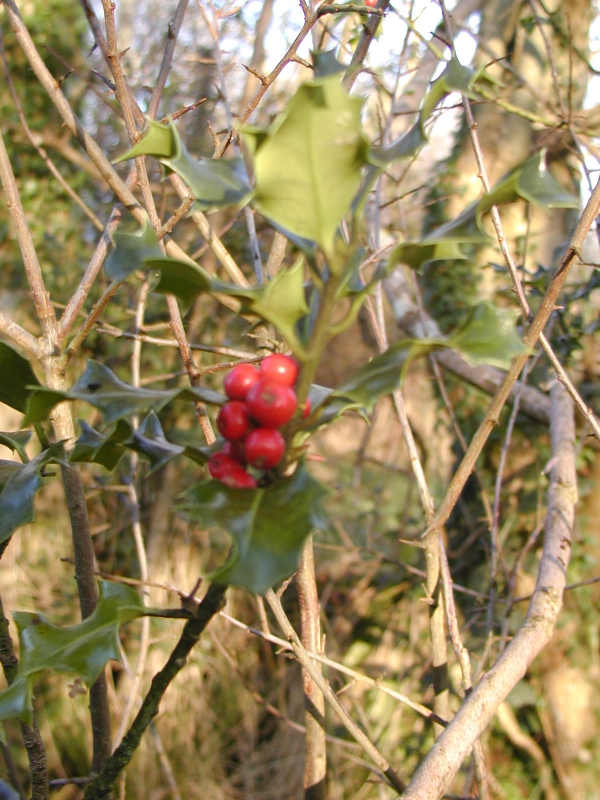|
|


|
HOLLY |

|
NAME :
Holly
GAELIC NAME : Cuileann
LATIN NAME : Ilex aquifolium.
COMMON / FOLK NAMES :  Aquifolius
Aquifolius  Bat's Wings
Bat's Wings  English Holly
English Holly  European Holly
European Holly  Holy Tree
Holy Tree  Holm Chaste
Holm Chaste  Hulm
Hulm  Hulver Bush
Hulver Bush  Mountain Holly
Mountain Holly  Tinne
Tinne 
MEDICINAL PART : Leaves.
PLACES OF ORIGIN : Grows wild and cultivated in Ireland, Europe and is
cultivated in the U.S.
HABITAT : Grows along hedgerows and in wild areas.
DESCRIPTION : Holly is an evergreen tree. It can reach a height of 30 foot. It
has smooth bark and green branches, which bear alternate dark green, shiny, leathery or
waxy, spiny leaves. There is both a male and female of this tree with only the female
producing the red berries.
FLOWERING PERIOD : From May to June small white flowers appear in umbellate
clusters, developing on the female plants into pea-sized , red, berry-like drupes which
remain through the winter.
PROPERTIES : Astringent
 Diuretic
Diuretic  Expectorant
Expectorant  Febrifuge
Febrifuge 
USES : Holly has been used for gout, stones and urinary problems, for chronic
bronchitis, rheumatism and arthritis.
Caution -:
The
berries are mildly poisonous and are dangerous to small children.

MAGICAL PROPERTIES
MAGICAL USES
An excellent protective herb, Holly guards against lightning, poison and evil spirits.
Planted around the home it protects it and its inhabitants from mischievous sorcerers.
When thrown at wild animals, holly makes them lie down quietly and leave you alone, even
if you don't hit them with the plant. Holly water (infused or distilled) is sprinkled on
newborn babies to protect them.
Holly is also carried to promote good luck, especially by men, since
the Holly is a 'male' plant.
( Ivy is the corresponding plant for women.) It is also hung
around the house for good luck.


Stories, Myths & Legends
Associated with Holly
Crith
Gablach - Brehon
Law Poem
The
Cave of Ceiscoran
The
Green Champions
top
Last Updated -
August 11, 2023

© Shee-Eire:
|
![]()
![]()
![]()
![]()